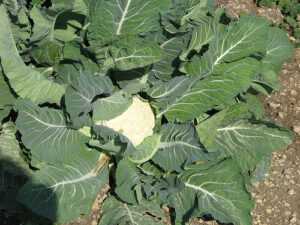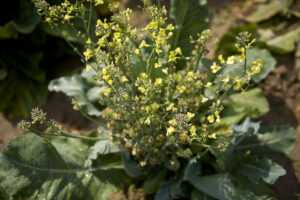Reminder: We’re now taking orders for Yiftah’s bi-weekly baking. Please send your orders by Friday. Yiftah finishes preparing and baking the loaves this Wednesday, and they will be delivered in the boxes of the 9th and 14th of February. You can read about Yiftah’s hand-baked, sprouted bread products here.
Yiftah has now introduced a new line of “synergetic breads.” In his words, “Synergetic breads, all made from organic sprouted spelt, contain a variety of additional components, carefully selected, that act according to the rule of synergy: effective cooperation. The combination of nutriments and the active components they contain improve and expand effective absorption in our bodies—thus, the whole that is produced by the total of its parts. These breads express the principle of nutrition for a healthy life, with each bread containing its own special feature. This is a revolutionary, one-of-a-kind, original line of breads. Eat in good health!”
A more detailed explanation about all the different types of synergetic breads can be found in the attached document (in Hebrew). Yiftah’s bread can be ordered via our order form or simply by e-mail/phone.
__________________________
A Cauliflower Bouquet
This week, as I once again reviewed the list in search of this newsletter’s “Featured Vegetable,” she was there, just as she has been over the past few weeks, waiting modestly, quietly, almost imperceptibly. The cauliflower. For some reason, this time she caught my eye. I tried to check if I’d ever mentioned her, in a newsletter, a paragraph, a few words…? All I could find was a reference she received some five years ago. Perhaps I missed something, but still, it has been a long while, and surely you’ll agree that she deserves some attention. Then, when I finally started writing, I realized how exciting the subject matter really is, and I want to tell you more and more. I also found numerous recipes. In short, the feature became pretty long, so I’m dividing it into two. This week and next week will be dedicated to the long-overlooked, yet charming Cauliflower.
The cauliflower is the flower of the cabbage (Caulis in Latin). Apparently, the cauliflower was developed from the wild cabbage during the Roman Empire in the Mediterranean Basin (Greece/Italy/Turkey–it is unclear exactly where). From there it traveled to European countries, the Middle East, India and China. When I say “developed,” I mean developed by human beings, almost like a modern agricultural start-up, only much, much slower. Some of the most incredible changes in the field of species development didn’t occur as part of a budgeted, constructed research, but rather due to the very simple act of collecting and saving seeds from the plants favored by the farmer and preferring them over seeds from lesser-loved plants. This simple act of propagating one plant and not another had a tremendous influence on the improvement and change of a given specie or crop. Long before man understood the genetics of plants, his actions caused slow, small changes in the cultivars that accumulated with time, yielding genuine results.
The cauliflower and broccoli owe their lives to the farmers (or perhaps the farmers’ wives and children who were growing bored with cabbage quiche) who developed a craving for the undeveloped flower buds of the cabbage. They chose the plants that produced large blossom heads, producing seeds from these plants which they then planted the next season. And this was how cauliflower and broccoli were born, both different variations of an embryonic florescence of cabbage. The accurate name of the cauliflower is var. botrytis, meaning “cluster” (Broccoli, developed in Italy, received the title var. italica.)
In the case of the cauliflower, like the broccoli, we eat the immature flower curd composed of densely clustered flower buds and stalks that thickened and became meaty. As the cauliflower grows, this head is surrounded by a dense circle of leaves that close themselves and cover it, similar to the cabbage. The inner leaves bend a bit inwardly, protecting the developing cauliflower and preventing sunrays from penetrating, thus blocking the production of chlorophyll and retaining its white color. This is why when we farmers select a variety of cauliflower, we give credence to choosing one whose leaves close well over the inflorescence. Sometimes, when the farmer notices that the leaves are not doing their job, he walks through the field and ties the outward leaves with a rubber band to make them cover the cauliflower and protect it from the sun. Unlike the broccoli, which develops additional heads on its side after the main head is harvested, the cauliflower only produces one, in the center of the plant, and does not produce more after this singe harvest. Usually, the cauliflower is picked when it reaches its maximum size, still keeping its density and solidity (or when we notice the leaves beginning to open, threatening a cauliflower “sunburn”). If we leave it in the field, the inflorescence will begin opening and separating, preparing for the blossoming of the tiny yellow flowers, like a great big bouquet.
Like the rest of her family, the Brassicaceaes, the cauliflower consumes a great deal of nitrogen. For this reason, it’s important to grow cauliflowers in fertile soil, fortified with compost, and precede its planting with the growth of legumes or “green manure” that enrich the ground with nitrogen. Following a crop of cauliflower and other Brassicaceaes, we try to grow only cultivars that require less nitrogen and can deal well with the earth that must recover from the previous high level of nitrogen consumption. The gourd family (pumpkins) that grows in springtime and summertime, after the Brassicaceaes season, are a good example of a “crop rotation” after the Brassicaceaes.
Cauliflower grows in cool seasons. We used to plant it over two rounds, once in autumn (September- November) and then at the end of wintertime/beginning of springtime (February- April). But after some experimenting, we realized the cauliflower is happiest in our field during wintertime. The autumn and winter cauliflowers yielded beautiful plants, whereas the February harvests had a hard time growing, became too hard, were attacked by insects, got blotched with stains, and didn’t really grow. We learned to bring up the planting to August, and over the past few years we have begun planting cauliflowers continuously from August to December. In August, we plant species that do well in the heat – White Corona, Fata Morgana and Barcelona, and from September we welcome our old friend, the Candid Charm.
This year, because of the never-ending heat, the plants encountered many a mishap at the beginning. They were attacked by black mildew, had difficulty growing and were very late developing the bud scalp. We watched plants that grew and grew, but something in their mechanism and internal clock indicated that it is too bare out there, too radiant, too sunny and hot, and no heads were seen in the horizon. Only when it began cooling down, the plants (very big by now) produced their cauliflower heads. But by the time the late head developed, it was already cool, and the black mildew was nowhere to be seen. This is also the reason why the cauliflowers you’ve been receiving this year can be very large.
More to come…
We share your happiness with these wintry days, and hope for more wetness and cold to come!
Alon, Melissa, Bat Ami and the Chubeza team
___________________________________
Escorting the Cauliflower in this Week’s Boxes Are:
Monday: Lettuce, fava bean, coriander or parsley, spinach, cauliflower, celeriac, tomatoes, cucumbers, carrots, radishes, broccoli
In the large box, in addition: potatoes, red beets, scallions
Wednesday: small radishes, parsley, cucumbers, fennel, tomatoes, carrots, arugula, cauliflower, lettuce, broccoli, beets
In the large box, in addition: celeriac or scallions, potatoes, peas
And there’s more! You can add to your basket a wide, delectable range of additional products from fine small producers of these organic products: granola and cookies, flour, sprouted bread, sprouts, goat cheeses, fruits, honey, crackers. You can learn more about each producer on the Chubeza website. The attached order form includes a detailed listing of the products and their cost. Fill it out, and send it back to us to begin your delivery soon.
_____________________________________
Cauliflower Cooking:
Cauliflower couscous: (from Six Easy and Healthy Cauliflower Recipes by Rachel Tal-Shir, Ha’aretz)
Ingredients:
One large, lovely head of cauliflower; vegetable soup or roasted vegetables with sauce
Preparation:
Separate the cauliflower head to small sections, place in food processor, and press “pulse” several times till cauliflower becomes granules. This is the couscous. Serve with any favorite soup or stew. The result: a rich, healthy, light and satisfying dish!


